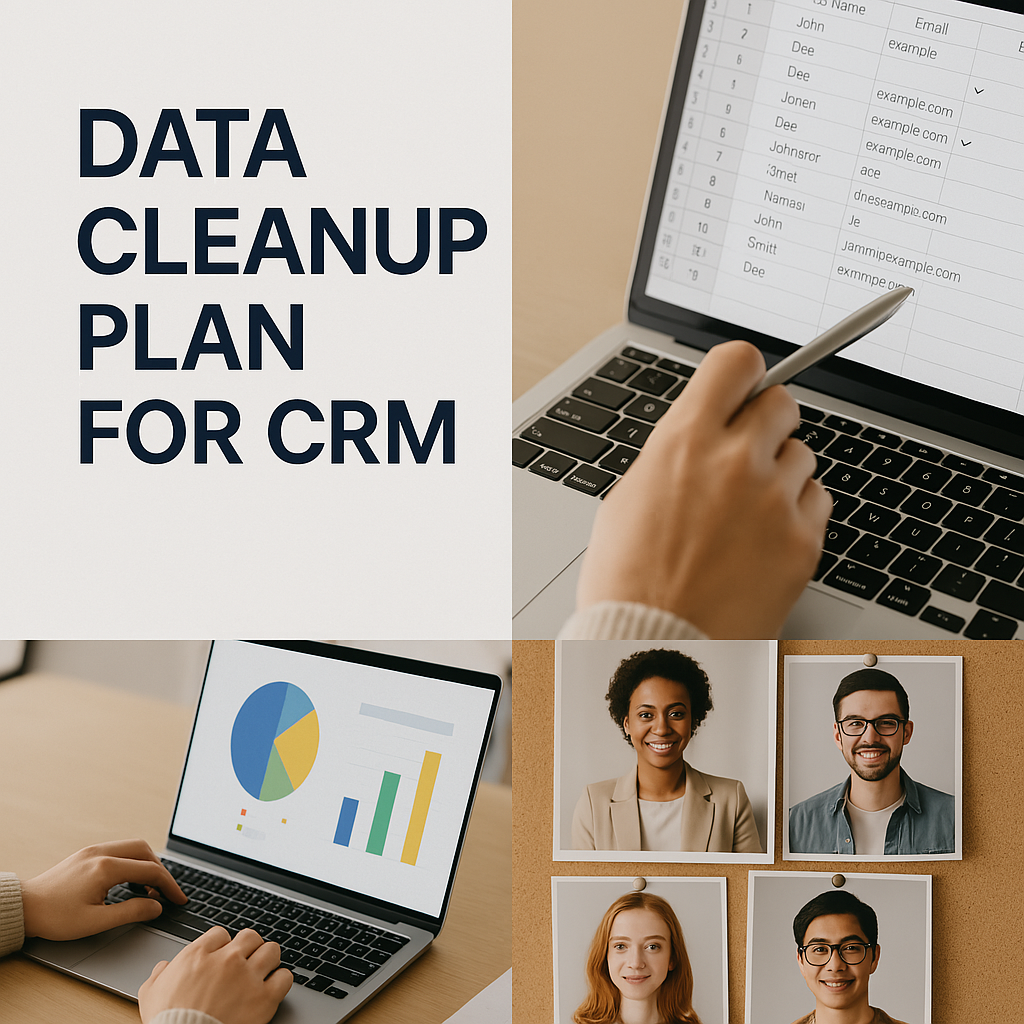A well-structured CRM system is the foundation of any successful data-driven marketing strategy. For businesses managing large-scale user interactions across ticketing systems, web platforms, customer service, and digital campaigns, keeping data clean, enriched, and unified is no longer optional. It’s a necessity. A properly executed data cleanup and structuring plan not only unlocks personalization and efficiency but also sets the stage for scalable marketing automation, accurate reporting, and intelligent customer engagement.
In this article, we explore a 3-phase data structuring plan tailored for organizations like Biletinial that aim to harness their internal and external data for maximum performance. We break down each phase from data collection and cleanup to persona building and performance reporting. The goal is clear: create a centralized, intelligent CRM framework that serves as the strategic engine behind every customer touchpoint.
Foundation and Data Audit
The first step in building a high-performing CRM starts with laying a clean foundation. This begins by collecting data from every available source, such as ticketing systems, analytics platforms, newsletter databases, and customer service logs. But collecting data is only half the battle. The real transformation begins with a deep audit.
This CRM audit process focuses on identifying inconsistencies in email structures, phone number formats, missing fields, and naming conventions. At the heart of this step is a powerful deduplication strategy. Using advanced logic, systems detect similar records across datasets. Instead of treating near-matching entries as unique users, the system intelligently merges them based on cross-field verification like email, phone, purchase history, and more.
To bring order to chaos, a unique user ID system is introduced. This guarantees that every user is consistently referenced across all data sources. This is crucial for accurate reporting, segmentation, and personalization. Next, the CRM is structured with custom fields aligned to business needs, such as event frequency, preferred categories, and city-based interests. This customization enables precise targeting in future campaigns.
Equally important is role-based access control. Marketing, support, and operations need different levels of access. By assigning permissions based on department and function, organizations can ensure both data security and workflow efficiency.
The result of this foundational phase is a clean, unified, and structured user database that’s ready for intelligent segmentation and lifecycle planning.
Enrichment and Persona Development
With a solid database in place, the second phase is all about adding depth and context to every user profile. A clean list of names and emails is not enough to drive performance. You need context. You need behavior. You need stories.
In this phase, user records are enriched by merging behavioral, transactional, and service data into a single unified profile. Every website visit, link clicked, search term typed, ticket purchased, and support ticket opened is linked to a specific user.
This 360-degree user view allows businesses to go beyond static fields and begin crafting meaningful user journeys. Permission data across email, push, SMS, and messaging platforms is validated, ensuring legal compliance and effective campaign reach.

With all of this rich data in hand, the next step is to segment users based on behavior and lifecycle stage. Segments like “first-time buyer,” “event explorer,” or “infrequent buyer” begin to take shape. But this goes deeper. The team then creates detailed buyer personas. These include labels like “loyal concertgoer,” “culture-first fan,” “deal hunter,” or “inactive but previously high-spend.”
These personas combine data points such as demographics, event interest types, frequency, value, and engagement trends. The payoff is huge. With personas in place, you can develop hyper-targeted campaigns that speak directly to a user’s motivations, habits, and intent.
From smarter retargeting to onboarding flows and reactivation campaigns, persona-based marketing unlocks relevance at every stage of the funnel.
Automation and Performance Reporting
With a structured and enriched CRM in place, the third phase brings it all to life through automation and reporting.
This phase turns your static database into a living system. Based on user behavior—like signing up, purchasing, or going inactive automated workflows are triggered. Whether it’s a welcome email, a push notification about a favorite artist’s event, or a reactivation SMS, every message is timely and relevant.
These multi-channel journeys span email, web push, mobile push, SMS, and messaging apps. Each channel communicates in harmony, driven by user preferences and engagement behavior.
And it doesn’t stop there. The system is designed with built-in performance dashboards that monitor everything from campaign effectiveness to data health. Marketing teams get insights into open rates, clickthroughs, and conversions. Support teams can spot rising dissatisfaction trends or recurring issues. Meanwhile, leadership can track CRM growth, engagement health, and persona-level ROI.
Just as importantly, internal training ensures every department knows how to use the system. Teams are trained to manage segments, adjust workflows, monitor dashboards, and act on insights.
This democratization of CRM tools increases agility and ensures cross-functional adoption. It becomes a shared platform for growth, not just a marketing database.
The Final Outcome
At the end of the three-phase journey, you don’t just have a CRM. You have a growth engine. Your organization now operates on a deduplicated, insight-rich, and behavior-driven CRM infrastructure. Every campaign is rooted in data. Every user journey is optimized for performance. Every decision is supported by actionable insight.
This infrastructure unlocks:
Scalable personalization across every channel
Smarter audience targeting through personas and segmentation
Efficient campaign automation triggered by real-time behaviors
Cross-departmental coordination through centralized access and dashboards
Ongoing optimization through performance monitoring and iterative refinement
In today’s competitive landscape, this is not just an advantage. It is survival.
If your CRM is still operating with disconnected spreadsheets, outdated email lists, and fragmented platforms, you’re leaving value on the table. A proper data cleanup and structuring strategy is your first step toward transforming that value into tangible business outcomes.
The key to unlocking CRM’s full potential is simple: structure first, intelligence second, action third. Build the foundation. Enrich the profiles. Automate the journeys. And when done right, your CRM doesn’t just support your business. It becomes the core of everything you do.